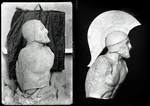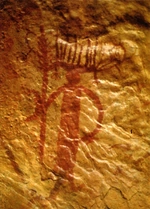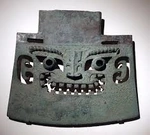Rome, Cultural Background Conditioned Its Measurement System

This chapter introduces the cultural background of Ancient Rome, which served as the fundament for the development of its measurement system.
Rome Pathway To Establishing Measurement Standards

To Set Up Standards There Need Some Conditions, What They Are?
If we look at the early stage of Rome’s establishment from a global historical perspective, the observation shows us that it was not one of the earliest cultures in the world. This fact may even be better (for Rome and its inhabitants at that time), from the point of view that some elements of the social machine had already been invented, and Rome only needed to pick them up and integrate them into its own mechanism.
From the socio-cultural point of view, the conditions undergoing any kind of standardisation are always found through relationship requirements within society.
What does this mean? As an example, let's imagine a play where we have a couple of families, and they are neighbors.
Do you think they need an extremely developed system to trade simple goods with each other, instead of arranging occasional exchanges on demand?
Another game appears in the case of a chain of trading operations. One actor sells a sample to a neighbor, and that actor retails the sample to a third person, who, in its turn, brings the item to a more distant place in order to retail it.
In this last schema, we may reconstruct the conditional requirements for such an item’s lifecycle to be applicable. Only in this play do the conditions for some market tools revive, which leads to the birth of such things as measurements, monetary systems, agreement rules, and a host of lateral mechanisms to fuel trading and interaction processes within such an imagined machine
What We Know About Measurement Units In Early Rome?
The Romans adopted several Greek units of measurement.
Let us introduce them: Digitus (finger), Pes (foot), Palma (palm), Uncia (inch), Cubit (cubitus), Gradus (step), Passus (pace)
These units were borrowed from Greek city-states (poleis), reflecting the influence of Greek culture and trade on early Roman society.
As Rome expanded, regional variations in measurement standards emerged (As examples: Pes Monetalis: Approximately 296 mm, used in monetary contexts, Pes Drusianus: Approximately 333 mm, used in some provinces, particularly Germania Inferior, Pes Atticus: Approximately 300 mm, used in Attica.). These variations were influenced by local customs, practical needs, and the integration of different cultures within the expanding Roman Empire.
Maybe It Is Time To Expose The Really Golden Standards, Or Did You Ever Hear Where The 'Golden Standard' Term Comes From?
We already passed through early Rome briefly, but here it will be appropriate to point out the turning point of establishing the conditions we so frequently note, which led to the standardisation itself. And this is the famous and well-known Twelve Tables Of Rome.
While not directly, the Twelve Tables are the zero milestone of all later Roman development pathways, both for Roman laws and for many other cultural architectures, including the unification of units.
Formal Standardisation Efforts (circa 1st century BCE – 1st century CE). The role of Magistrates and Surveyors was established in the mentioned tables, and evolutionarily came the decision to unify the units being used. They used tools like the groma, a surveying instrument, to establish consistent measurements for land division and construction.
Counting the standardized units, we may create a short list: Pes (foot): Approximately 296 mm., Uncia (inch): One-twelfth of a foot, approximately 24.6 mm., Mille Passus (mile): 1,000 paces, approximately 1,480 meters., Actus: A unit of area, 120 feet by 120 feet., Jugum: A unit of land area, approximately 2,523 square meters.
If our honorable reader is interested in surveying more about The Twelve Tables Of Rome, he may visit this article...We promised to decrypt where the 'Golden Standard' phrase comes from?
Once, one single man woke up with a heavy headache. Maybe he had been too drunk yesterday, we have no idea for now, but... Emperor Augustus erected a monument in the Roman Forum marking the starting point of all Roman roads, symbolizing the centralization and standardisation of distances across the empire.
You may search in the table below the Roman Standardized Units, for the Rome Empire Period (Before the Empire Split).
| Unit Name | Rate To Meter | Subdivision | Use Purpose |
|---|---|---|---|
| Length, Roman Foot (Pes) | Approximately 0.296 m. | Divided into 12 uncia (inches), each approximately 24.6 mm. | Standard unit for length measurements in construction, land division, and daily life. |
| Length, Roman Mile (Mille Passus) | 1,000 paces, approximately 1,480 meters. | - | Standard unit for measuring distances on Roman roads. |
| Weight, Roman Pound (Libra) | Approximately 0.3289 Kg. | Subdivision: Divided into 12 uncia (ounces), each approximately 27.4 grams. | Standard unit for weight measurements in commerce and trade. |
| Volume, Roman Liquid Measure (Sextarius) | Approximately 0.546 liters. | - | Standard unit for measuring liquids, equivalent to about 1 pint. |
Rome Units Summary
We listed the main conditional keys of the Roman Measurement system, and here we should summarize the units in order to maintain consistency with the article's topic theme.
| Unit Name | Origin | Standardisation | Application | Notes |
|---|---|---|---|---|
| Pes (Roman Foot) | The Roman foot (pes) was influenced by Greek and Etruscan measurements. | Under Emperor Augustus, the pes monetalis was standardized to approximately 296 mm. | Used in construction, land measurement, and daily life. | Regional Variations: In some provinces, such as Germania Inferior, the pes Drusianus was used, measuring about 333 mm. |
| Uncia (Inch or Ounce) | Derived from the Roman foot, the uncia was one-twelfth of a foot. | Standardized to approximately 24.6 mm. | Used in both length and weight measurements. | Legacy: The term 'inch' in modern English is derived from uncia. |
| Mille Passus (Roman Mile) | The Roman mile was based on the distance covered by 1,000 paces. | Set at 5,000 Roman feet, approximately 1,480 meters. | Used to measure distances on Roman roads. | Legacy: The modern mile is derived from the Roman mille passus. |
| Jugum (Acre) | The jugum was a unit of land area. | Defined as 240 × 120 Roman feet, approximately 2,523 square meters. | Used in agriculture and land distribution. | Legacy: The term 'acre' in modern English is derived from jugum. |
| Libra (Pound) | The Roman pound (libra) was a unit of weight. | Set at approximately 328.9 grams. | Used in commerce and trade. | Legacy: The abbreviation 'lb' for pound is derived from libra. |
| Sextarius (Liquid Measure) | The sextarius was a unit of liquid volume. | Defined as one-sixteenth of an amphora, approximately 0.546 liters. | Used for measuring liquids like wine and oil. | - |
| Pertica (Surveyor's Rod) | The pertica was a measuring rod used by Roman surveyors. | Typically equal to 10 Roman feet, approximately 2.96 meters. | Used in land surveying and construction. | - |
| Groma (Surveying Instrument) | The groma was a Roman surveying instrument. | Designed to ensure right angles in land surveying. | Used in the planning and construction of roads and buildings. | - |
We pointed out earlier that standardisation always covers the territory where the sovereign’s authority extends. But what about localities where such standards already exist? Are the local social rules and rights, along with their traditional standards, completely replaced by the imposed rules and norms of the conqueror (in the case of defeated states)?
Looks like this is an appropriate place to look far away from Rome and turn our view to the Middle East, now known as Israel, at the time of the Jewish kingdom’s fall under Roman imperial power.
This article is part of a long-read publication. [Go to the full version →]







This chapter devoted to two cultures, Babylonia and Persia, and here uncover why...

And here the place we should turning backward, to culture, already passed but under other angle...






